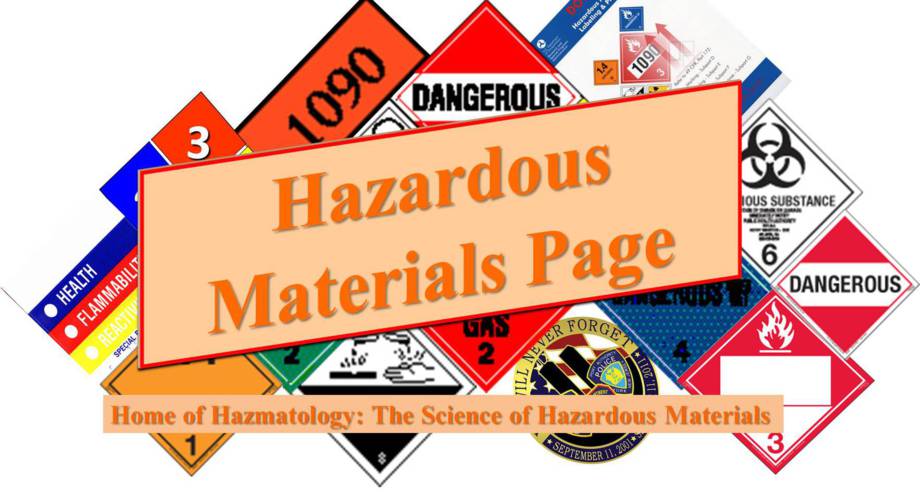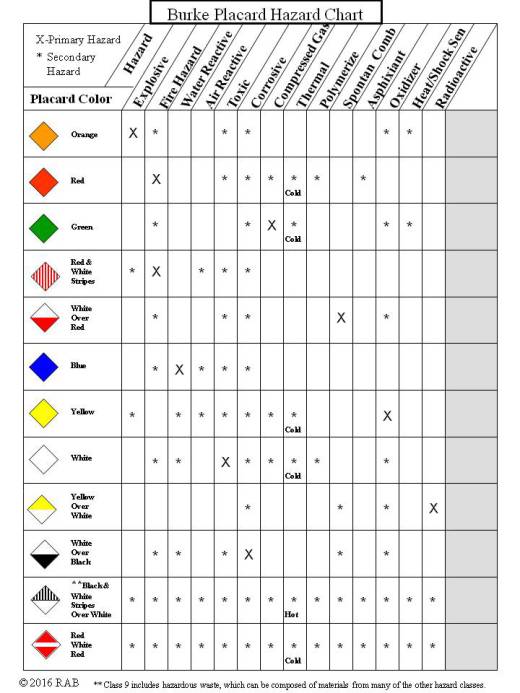Burke Placard Chart
Burke Placard Hazard Chart
Almost all hazardous materials have more than one hazard. The United States Department of Transportation (DOT) placarding and labeling system only shows the most severe hazard of a placarded or labeled material. Hidden hazards include simple asphyxiation, water and air reactivity, polymerization, heat and shock sensitivity, and thermal hazards, which include both HOT and COLD. Additionally, most hazards listed by the DOT system can be secondary hazards for certain hazardous materials and are not always noted by the placard, label, or hazard class. This chart lists the primary and most common secondary hazards of chemicals based upon the hazardous materials tables in 49 CFR and general chemical and physical principles of chemistry.
Information on this chart provides emergency first responders with additional information that may save their lives when responding to hazardous materials incidents. This chart can be used in conjunction with the DOT Emergency Response Guide Book if present in every emergency response vehicle, including Fire, EMS, Law Enforcement, and Public Works.
The chart is not, nor was it meant to be comprehensive, but rather it is a general guide to remind first responders of some of the secondary hazards associated with hazardous materials that may be present at an incident and may be encountered by emergency responders.
This chart is designed to reduce any potential surprises that maybe waiting for first responders. This chart is just another tool for first responders to help them identify the dangers of hazardous materials present and to help them take appropriate actions based upon local SOP’s, NFPA 471, 472, and 473 as well as OSHA 1910.120.



